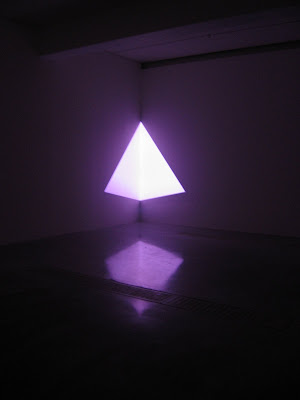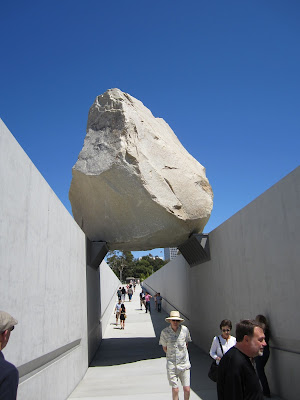Andy Goldsworthy
Land art, earthworks or earth
art is an art movement that started in
october 1968, in which landscape and the work of art are inextricably linked.
It is also an art form that is created in nature, using natural materials such as soil, rocks, logs, branches, leaves and water with introduced materials such as concrete, metal, asphalt, or mineral pigments. Sculptures are not placed in the landscape, rather, the
landscape is the means of their creation. Often earth moving equipment is
involved. The works frequently exist in the open, located well away from
civilization, left to change and erode under natural conditions. They also pioneered a category
of art called site-specific sculpture,
designed for a particular outdoor location.
Land art is to be understood as an
artistic protest against the perceived artificiality, plastic aesthetics and
ruthless commercialization of art at the end of the 1960’s in America.
Exponents of land art rejected the museum or gallery as the setting of artistic activity and developed
monumental landscape projects which were beyond the reach of traditional
transportable sculpture and the
commercial art market.
Nowadays in most respects 'land art'
has become part of mainstream public art, James Turrell an american artist primarily concerned
with light and space, at the moment has exhibitions simultaneously in three
major us museums.
James Turrell
Land art was inspired by, and many of
the artists associated with land art had been involved with minimal art and conceptual art and minimalism.
Perhaps the best known artist who
worked in this genre was the American Robert Smithson whose 1968 essay "the sedimentation of the mind:
earth projects" provided a critical framework for the movement. His best
known piece, and probably the most famous piece of all land art, is the spiral jetty (1970) Great Salt Lake in northern Utah, U.S.
spiral jetty
'Land artists' have tended to be
american, with other prominent artists in this field including, Carl Andre, Alice Aycock, Walter de Maria, Hans Haacke, Michael Heizer, Nancy Holt, Dennis Oppenheim, Andrew Rogers and James Turrell.
Land artists in America rely mostly
on wealthy patrons and private foundations to fund their often costly
projects. Michael Heizer's « levitated mass » at the lacma has a
price tag of around $ 10 million and Turrell’s roden crater (started in 1972),
possibly the largest piece of land art thus far, reshaping the earth
surrounding the extinct Roden Crater Volcanoin Arizona,is supposed to cost as much as $ 22 million when
finished.
Michael Heizer - Levitated Mass
European land artists or people
associated with this art form, such as Andy Goldsworthy and Richard Long, seem
to steer away from large, costly projects
To achieve artworks that in their
simplicity have a very powerful and poetic presence.
Andy
goldsworthy is a british artist whose collaborations with nature produce
uniquely personal and intense artworks. Using a seemingly endless range of
natural materials—snow, ice, leaves, bark, rock, clay, stones, feathers petals,
twigs—he creates outdoor sculpture that manifests, however fleeting, a
sympathetic contact with the natural world. Before they disappear, or as they
disappear, goldsworthy, records his work in suburb color photographs.
Andy Goldsworthy
Andy Goldsworthy
In his own words;
At its most
successful, my ‘touch’ looks into the heart of nature; most days i don’t even
get close. These things are all part of the transient process that i cannot
understand unless my touch is also transient—only in this way can the cycle
remain unbroken and the process complete. I cannot explain the importance to me
of being part of the place, its seasons and changes. Fourteen years ago i made
a line of stones in morecambe bay. It is still there, buried under the sand,
unseen. All my work still exists in some form.
You can see more of Goldsworthy's work in the documentary "Rivers and Tides".
You can see more of Goldsworthy's work in the documentary "Rivers and Tides".






No comments:
Post a Comment